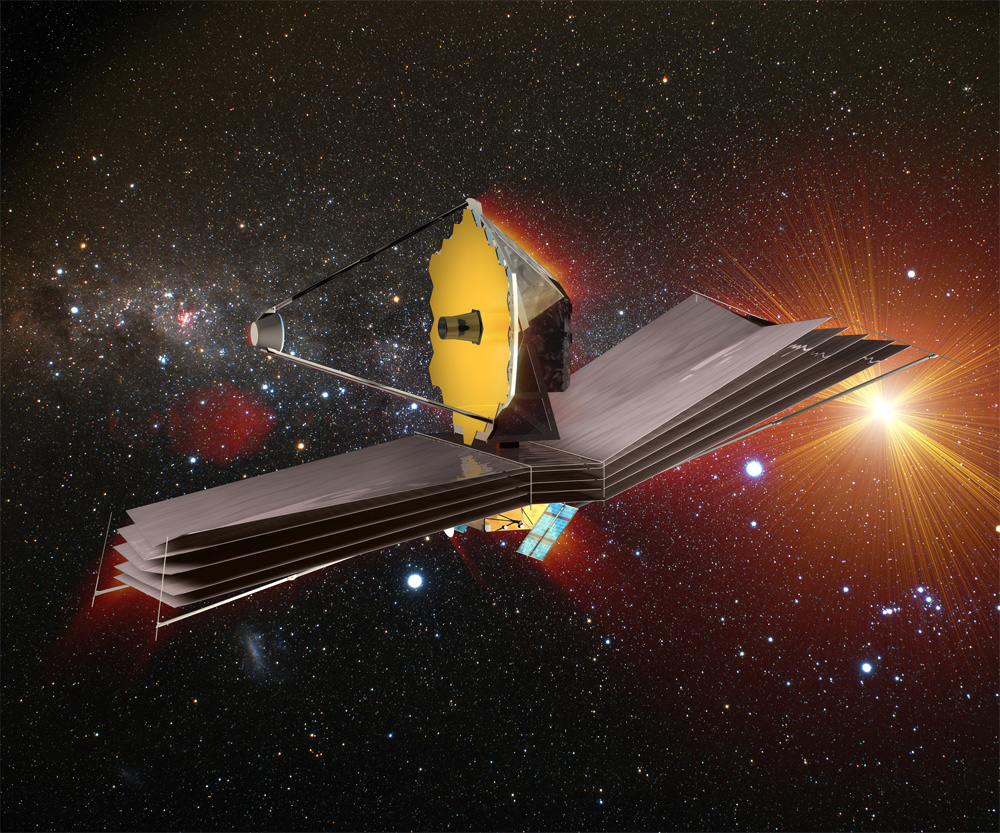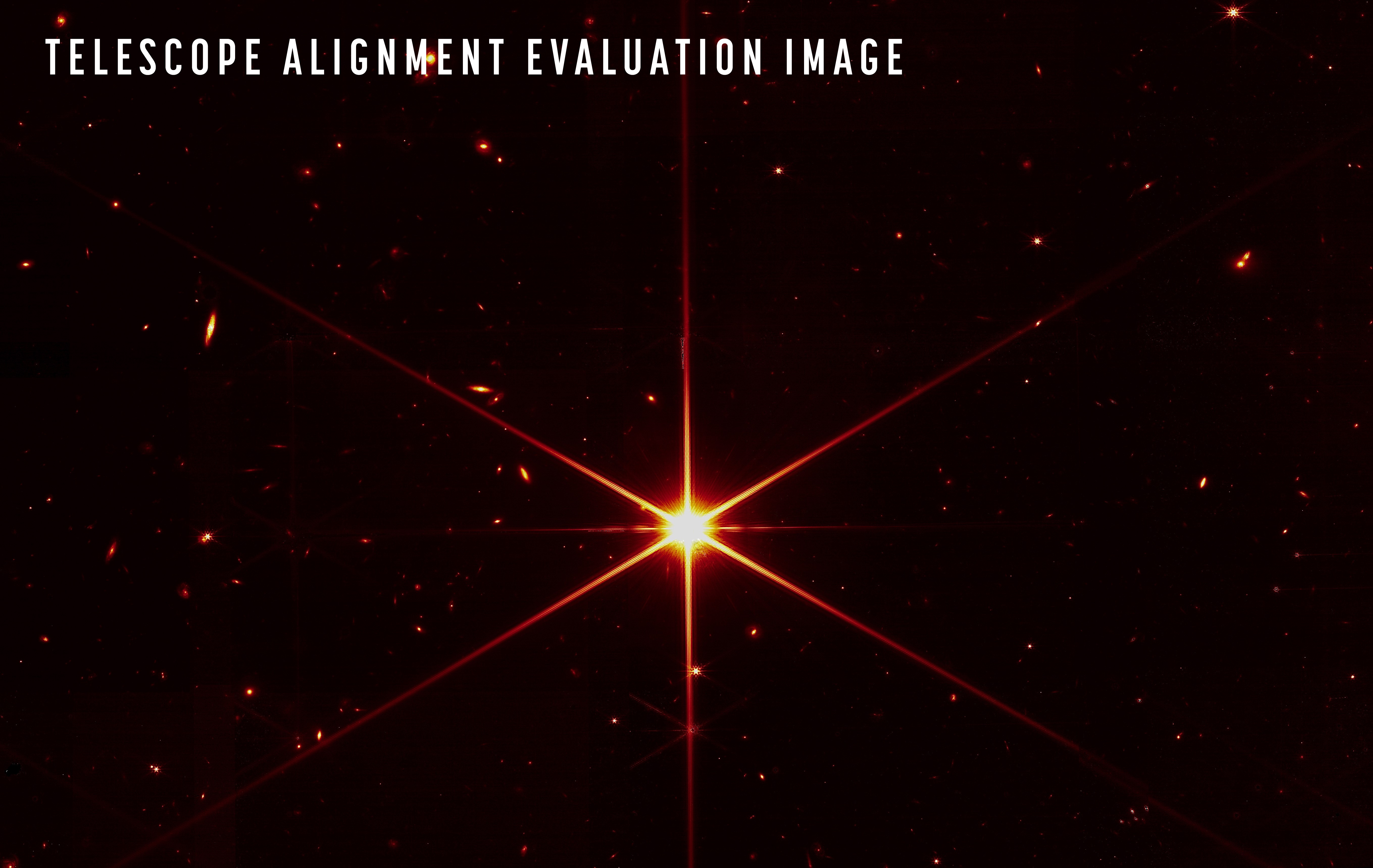James Webb Space Telescope's 1st science targets remain super secret as observatory settles in

In the first year of its scientific operations, the James Webb Space Telescope will study small galaxies orbiting the Milky Way, look for the oldest stars in the universe or peer inside mysterious remnants of an exploded star.
Its very first science targets, however, remain top secret.
The mighty James Webb Space Telescope recently aligned its mirrors and showed off the sharpness of its eyes on a random underwhelming star. But the world's science geeks are still holding their breath for the first proper scientific images, the objects of which will be kept under wraps until the images' release, likely in July. NASA has been teasing those images throughout the launch and commissioning campaign, but project personnel are staying strictly mum about their targets.
"Yes, the targets have been chosen for the super-secret first images that will be released," Jane Rigby, the James Webb Space Telescope operations project scientist at NASA Goddard Space Flight Center in Maryland said during a news conference held on March 16.
Related: How the James Webb Space Telescope works in pictures
However, many other early targets for the observatory are public knowledge. During the news conference, Rigby confirmed that Webb's first year of science observations are already finalized.
"We've selected more than a full year of science," Rigby said. "Those targets, those programs have been fully specified. The computer files that tell Webb how to take the data, we have all those in hand."
Breaking space news, the latest updates on rocket launches, skywatching events and more!
Related: James Webb Space Telescope: The scientific mysteries no other observatory could unravel

Rigby said NASA received more than a thousand research proposals from astronomers from all over the world and selected "the best ones," including those looking for light from the first stars and galaxies that emerged in the universe only a few hundred millions of years after the Big Bang.
"We will be seeing back in time, to understand how galaxies like our own Milky Way formed, and then evolved over 13.7 billion years of cosmic time," she said, adding that the $10 billion Webb observatory will also study exoplanets, planets orbiting other stars than our sun, and analyze their atmospheres.
In an earlier interview, Olivia Jones, an astrophysicist at the Royal Observatory in Edinburgh, Scotland, told Space.com that among the early targets the telescope will look at will be the Large and Small Magellanic Clouds, two small galaxies at the outskirts of the Milky Way. Jones is involved in 12 different observation campaigns that will take place in Webb's first year of science operations.
"The first data I think I'll get is of one of the star formation regions in the Magellanic Clouds called NGC 346," Jones said. "[This region] is in the continuous viewing zone of the James Webb Space Telescope. So that means it can be observed at any point."
Webb, Jones said, will reveal the chemical composition of these galactic companions of our galaxy in unprecedented detail. Scientists know that both of these two small galaxies have significantly lower metal content than the Milky Way, which suggests their different chemical evolution.
Later in the year, Jones said, the observations will focus on the Butterfly Nebula, a remnant of an exploded giant star located in the Milky Way some 3,800 light-years away from Earth.
But why do we have to wait so long for the first proper scientific images when the telescope's mirrors have already been aligned?
NASA's Rigby explained in the news conference that during the mirror alignment, the engineers used only one of the telescope's four cutting-edge science instruments, the Near Infrared Camera (NIRCam). The other three instruments, Rigby said, have been switched on, but still need to be adjusted and aligned with the mirrors to produce images of the best scientific quality.
"We now have to align the telescope to all four of the science instruments, so every one of these four instruments is getting a crisp image," Rigby said.
This aligning process will last until the end of June, with scientific observations expected to commence in early July. Only then will the world learn what the telescope will have seen when it first opened its eyes for real.
Follow Tereza Pultarova on Twitter @TerezaPultarova. Follow us on Twitter @Spacedotcom and on Facebook.

Tereza is a London-based science and technology journalist, aspiring fiction writer and amateur gymnast. Originally from Prague, the Czech Republic, she spent the first seven years of her career working as a reporter, script-writer and presenter for various TV programmes of the Czech Public Service Television. She later took a career break to pursue further education and added a Master's in Science from the International Space University, France, to her Bachelor's in Journalism and Master's in Cultural Anthropology from Prague's Charles University. She worked as a reporter at the Engineering and Technology magazine, freelanced for a range of publications including Live Science, Space.com, Professional Engineering, Via Satellite and Space News and served as a maternity cover science editor at the European Space Agency.
